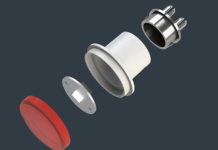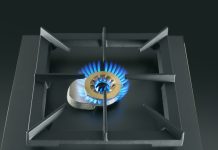
The markets of the so called “commodities”, such as minerals, metals and plastic materials, are today characterized by strong volatility and unforeseeable price variations.
Alessandro Binetti Traverso
The labour cost is often indicated as the main element of competitiveness that damages home industries in comparison with rising countries’. Actually, that cost can vary by more than one order of magnitude, not only between a European and an Asian enterprise but also referring to enterprises of Eastern Europe rising countries. Besides the labour cost, however, according to a long-term competitive logic, it is worth considering other elements, too, such as the geographical proximity to new outlet markets of products and logistic structures, not to mention energy supply systems and provisioning systems.
Today the provisioning of raw materials, in particular, constitutes an element of strong criticality for many enterprises. Over the last ten years the markets of the so called “commodities”, including metals and minerals, in fact, have been characterized by strong volatility and unpredictability of prices. In the first years of the last decade and until 2009 we registered strong price rises of the main raw materials, which reached their peak in 2008 and then diminished owing to the onset of the economic crisis. Besides, it is worth pointing out that the economic crisis has been worsened by the speculative effect of financial transactions on derivatives, which have also involved the “commodity” markets, with distortion effects on the trend of the prices of raw materials.

The ruling position of some countries
In perspective, both in anticipation of the overcoming of the economic crisis and against the rising consumptions of developing countries, whose first positions are held by China, India, Brazil and Russia, it is reasonable to think that we will live a new price upsurge and even a difficulty of provisioning due to the offer scarcity, especially for some minerals and metals that are used in those products with the highest added value. In this situation European enterprises are destined to be disadvantaged in the world competition to achieve the best provisioning conditions of raw materials.
Concerning this, we have just to remind that already today China is the country with the biggest consumption of raw materials in the world and in particular of metals. Its consumption of copper, for instance, has grown from 12% of the world total in 1998 up to 40% in 2008. That situation involves, besides China, also other rising countries that are simultaneously producers of strategic materials and at the same time protagonists of a strong industrial development. These Countries try, in fact, to assure advantageous conditions to the local industries in the provisioning of raw materials at their disposal, creating troubles and shrinkages to the export activities.
Concerning this matter we should remind the case of China, which, even if for a short time, has stopped the export to Japan of rare earths, of which China itself holds the absolute trade monopoly, with 97% of the world production, causing heavy consequences on the economy of that Country. In a time in which the consumptions of these minerals tend to grow, China has collected a series of complaints from the major industrialized Countries, USA, EU and Japan, for having placed limits on the export of rare earths, whose world production amounts to about 133,000 tons/year today but is expected to double in the next five years.

An unbalance destined to increase
Such an unbalance is destined to worsen owing to various structural problems concerning the supply and distribution chains of some raw materials, whose markets are anyway different one another. Some materials, in fact, including base metal minerals like aluminium, copper, lead, nickel, tin and zinc, are treated through the Stock Exchanges, the main of which is the London Metal Exchange (LME). Other materials, on the contrary, and among them there are some critical ones in terms of availability, such as cobalt, gallium, indium and rare earths, are not treated by the Stock exchange and their market is then scarcely transparent.
Even if the supplies of rare earths are quantitatively very inferior to other materials’, nevertheless their importance is very high because they are used, together with noble metals, for the manufacturing of innovative high added value products. They include, just to mention some of them, electronic products like, first of all, portable phones and PC, Led, optical fibre systems, photovoltaic panels and electrical motors with permanent magnets, electrical systems that make use of superconductive materials as well as some strategic parts for hybrid and electrical cars, such as high-performance batteries.
The sector of the consumer and professional electronics depends on the availability of noble metals and rare earths and likewise the entire so-called “green economy” including the new cars with low environmental impact. To be aware of that, you have just to think that a portable phone uses 250 mg of silver, 24 mg of gold, 9 mg of palladium, 9 g of copper, 3.5 g of cobalt and 1 g of rare earths for the battery with lithium ions. Much bigger is the quantity of these minerals used in hybrid and electrical cars.


European strategies
The elements of criticality in the provisioning of raw materials have attracted the attention of the European Commission, which on this matter has setup a work team whose conclusions were published on July 30th 2010 (Report Ad-hoc Working Group). In this document they highlighted the strong interactions between physical and financial markets of raw materials, including derivatives, for which the Commission has recommended to continue the studies aimed at a deeper and deeper understanding of the dynamics in course. At the same time it has promoted several actions oriented to improving the transparency and the correctness of the behaviours of the various players.
As far as the typology of critical materials for the European industry is concerned, the work team has identified 14 elements for which they think there may be provisioning risks because of their scarcity and the difficulty of replacing them with other materials, and also because of the concentration of their production in some Countries that are affected by dangers in terms of political and economic stability or that, due to reasons of commercial competitiveness, can carry out policies oriented to the limitation of their exports.
For this reason they have proposed a discipline of the restrictions to exports in the WTO ambit and for a range of materials they have reached bilateral and multilateral agreements (Free Trade Agreement) with several countries that produce raw materials, including Korea and Russia. With the “Seventh Framework Programme for Research and Development”, in the ambit of the collaboration between Europe and African, some development projects of the mining activity have been financed, too.
Concerning Europe it is worth reminding the “ProMine” project, launched in 2008 with a budget of 17 million Euros, which was aimed at developing the first satellite data-base on a European scale of mineral resources. Other funds were allocated by the Community for the development of advanced mineral technologies as well as for the support of the activities of exploration of the European territory and of competitive extraction of minerals. We should however consider that the opening of new mines on the European territory arouses several difficulties, not so much owing to the scarcity of mineral or the unavailability of adequate technologies but rather because of the problems deriving from the urban and street exploitation of the soil and the numerous environmental constraints.

The role of efficiency and of the recycling of materials
The European policies of sustainable growth and of industrial competitiveness have held in high regard the aspects concerning the energy efficiency, the excellent use of raw materials and the collection, recycling and disposal of wastes, referring in particular to the reuse of some specific materials such as iron, aluminium, copper, paper and glass. Remarkable results have been achieved in the ambit of the energy saving of products, especially of domestic ones that contribute by over 20% in total energy consumptions. The practice of the energy labelling has been extended in generalized way for these products.
Concerning wastes, which lots of economists deem to be today the most important European mine of materials, the Commission has developed severe regulations for their treatment in the ambit of the “Waste Framework Directive”. Directives that have been afterwards transposed and transformed into laws by the various European Governments. Besides, it has operated to prevent illegal exports and dumping operations of wastes themselves.
Referring to waste electrical and electronic equipment (WEEE) that constitute a relevant part of the total of wastes, it is worth observing that very detailed regulations (Directives 2002/96/EC and 2008/34/EC) have been extended to all the Countries of the Community, fixing also an ambitious target for the treatment and recovery of a relevant part of the wastes produced in each Country of the Community. The implementation of the Directives has anyway taken place in different ways and times in the 27 member States. Besides some virtuous Countries like Sweden, Holland and Belgium where a legislation on the matter already existed before the European Directives, in other countries and in particular in Eastern Europe ones, the transposition and the implementation of the regulations were more difficult and slower.
Also in Italy we have accumulated delays, especially in the South regions, to the extent that still today slightly more than 25% of worn-out household appliances are treated in conformity with the European directives. In comparison with the past, however, outstanding progresses have been made, as highlighted by the data supplied by the Annual Report 2011 about the Italian system of collection and treatment of waste electrical and electronic equipment. This report points out, in fact, that if in 2006 138,746 tons of WEEE had been managed according to the Directive, in 2011 that volume grew to more than 260,000 tons, with the 6% rise in comparison with the previous years, exceeding the European target of 4 kg/inhabitant.

“White good” enterprises
The criticality of the materials defined strategic by the European Union, such as rare earths, platinum composites, cobalt and indium, does not particularly involve the Italian industries that produce household appliances and their components. The materials used by these enterprises, in fact, are prevailingly constituted by steel, aluminium, copper and plastic materials, whose provisioning is not affected by political limitations and whose quotations are treated in quite transparent way by the Stock Exchanges.
In spite of that, over the last few years enterprises have suffered from the great price volatility, as confirms us the engineer Marco Piras, Purchase manager of Sabaf Spa, the Italian Group that ranks among the world leaders in the production of components for cooking appliances. It is however true that the price fluctuations of the raw materials purchased by Sabaf have gradually diminished, compared to the past, and in the opinion of the engineer Piras this is certainly the consequence of the crisis in course.
Besides, new disturbing factors might be recently constituted by the troubles that are concerning two producers of steel and aluminium of primary importance, respectively Ilva in Taranto and Alcoa at Portovesme in Sardinia. Those problems, in fact, might limit the provisioning choices for the national industries, which would be consequently compelled to turn to foreign supplies, at less competitive prices. Obviously, these disturbing factors would be added to the renowned problems caused by the industrial crisis of the sector, with a production of household appliances that has fallen to historic lows.
In such a market situation, it has become difficult to make purchase forecasts on the medium-long term and therefore it becomes almost impossible to provide for “umbrella” contracts with which to obtain advantageous and stable supply conditions in time. The use itself of financial products, such as derivates and the insurance coverage on raw materials, is not always feasible in absence of certain forecasts. Therefore, it is often necessary to turn to frequent negotiations for provisioning, aimed at merely restoring in-house stocks.
In the past Sabaf, for its operating unit headquartered in Brazil, provided for the purchase of the necessary raw material (steel strip) in Italy, both for economic and quality reasons. Today, in a market situation deeply changed, it has become more convenient to purchase directly in Brazil, also because the quality level of supplies has notably improved and, besides, it is possible to save on packaging, transport and customs costs.
The shortage of raw materials and of energy as limiting factor of the economic development is a theme constantly debated in the last fifty years, since when in 1972 was published the report “The limits of development” written by MIT on behalf of the Club of Rome. This report, whose conclusions were absolutely pessimistic about the future availability of natural resources, sparked an international debate of enormous proportions and since the time of its publication has undergone successive verifications, maintaining anyway the merit of having placed the distinction between growth and development under the focus of economy and politics.
Today, forty years later, it is widespread in the world the awareness of the need of a sustainable development, where the saving of resources, the recycling of materials and the environment protection play an essential role. At the same time, nevertheless, the most catastrophic forecasts about the scarcity of raw materials have been partly denied in practice, as witnessed by the estimates of the world’s reserves of oil and minerals that, despite the growing consumptions, have been constantly revised upwards, with the discovery of ever-new fields.
This opinion is shared also by the professor Maurizio Masi, Headmaster of the School of Industrial Engineering at the Milan Polytechnics, who believes that the scarcity of raw materials, including those deemed critical by the European Commission, is a false problem. According to Professor Masi, in fact, the resources of the earth, still today, have been only partially exploited, while the mining technologies are constantly improving and at the same time the practices of collection and recycling of wastes are spreading in the most industrialized countries, which are also the major users of raw materials.
Concerning this, it is important to increase the percentage of waste collection, which today in Italy is about 30% of the total, at the same time improving the level of material recovery, it too around 30%. From this it follows that the materials actually recycled from wastes amount to about 10% of what would be theoretically possible, with a very big margin for an increase of recycling activities.




